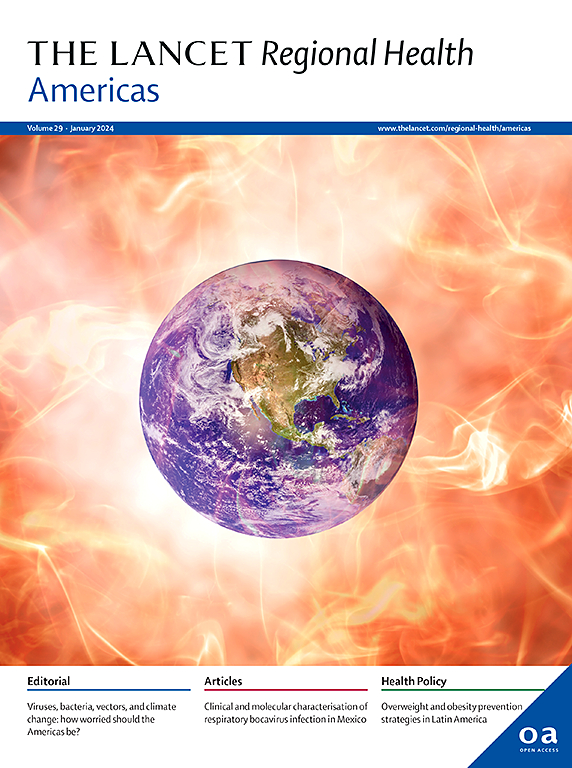High-resolution spatiotemporal analysis of chikungunya epidemics between 2019 and 2020 in Salvador, Brazil: a municipality-level transmission dynamics study
IF 7
Q1 HEALTH CARE SCIENCES & SERVICES
引用次数: 0
Abstract
Background
Chikungunya virus (CHIKV) continues to cause explosive epidemics in Brazil. We investigated its transmission dynamics in Salvador, Brazil, to understand the factors driving its reemergence and spread.
Methods
In this epidemiological study, we analyzed by census tracts the chikungunya cases reported in Salvador during the 2019–2020 epidemics. We used SaTScan software to identify spatiotemporal clusters and assessed how census tract characteristics (socioeconomic, environmental, and prior chikungunya occurrence) influenced chikungunya incidence through a Bayesian spatial model using Integrated Laplace Approximation (INLA).
Findings
Citywide, 19,129 cases (mean age: 40.2, range: 0–112; male: 41.8%, female: 58.0%, non-binary: 0.2%) were reported between 2016 and 2020, with a significant increase in 2019 and 2020 (4549 and 13,071 cases, respectively). We found nine spatiotemporal clusters in 2019 and seven in 2020, with 17.2% (387 of 2252) overlap of census tracts between the two years. The chikungunya incidence by census tract was negatively correlated with income and vegetation but positively correlated with land surface temperature. The census tract level incidence in 2020 exhibited a non-linear correlation with the 2019 incidence; up to a certain level, the 2020 risk increased as the 2019 incidence increased, but when the 2019 incidence was extreme, the 2020 risk was reduced.
Interpretation
These findings suggest that CHIKV transmission is localized, even during what appeared to be a citywide epidemic, creating high-risk pockets within the city. Socioeconomic factors, environmental conditions, and prior chikungunya incidence, probably reflecting herd immunity, all influence case incidence.
Funding
Secretary of Health of Salvador, Federal University of Bahia, Oswaldo Cruz Foundation, National Council for Scientific and Technological Development, Foundation for Research Support of the Bahia State, Coordenação de Aperfeiçoamento de Pessoal de Nível Superior – Brasil (CAPES), Clinical and Applied Research Network in Chikungunya, Global Virus Network, Burroughs Wellcome Fund, Wellcome Trust, and the United States National Institutes of Health.
求助全文
约1分钟内获得全文
求助全文
来源期刊

Lancet Regional Health-Americas
Multiple-
CiteScore
8.00
自引率
0.00%
发文量
0
期刊介绍:
The Lancet Regional Health – Americas, an open-access journal, contributes to The Lancet's global initiative by focusing on health-care quality and access in the Americas. It aims to advance clinical practice and health policy in the region, promoting better health outcomes. The journal publishes high-quality original research advocating change or shedding light on clinical practice and health policy. It welcomes submissions on various regional health topics, including infectious diseases, non-communicable diseases, child and adolescent health, maternal and reproductive health, emergency care, health policy, and health equity.
 求助内容:
求助内容: 应助结果提醒方式:
应助结果提醒方式:


